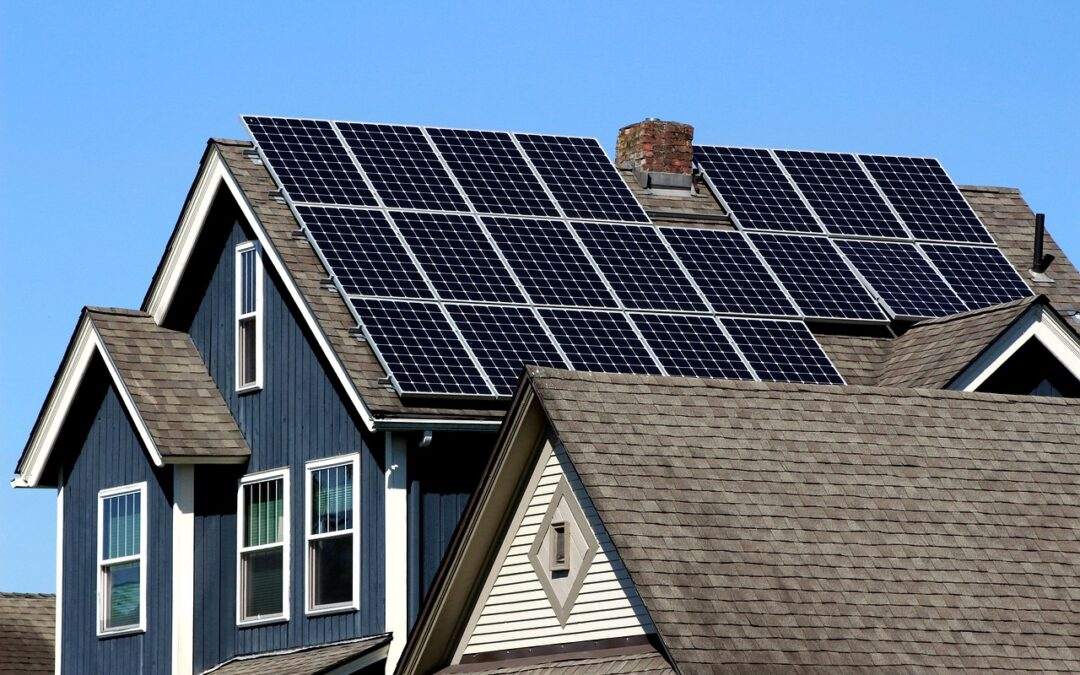Building a new home in the picturesque community of Utah County is an incredible opportunity to create not only a beautiful and functional living space, but also one that is energy-efficient and eco-friendly.
As the world becomes increasingly aware of the importance of sustainable living, adopting green building practices for your personal oasis both beneficial to the environment, as well as an excellent investment in the long run.
Why Does It Matter?
Energy-efficient homes are more than just a trend; they are fast becoming the new standard for residential construction, especially as homeowners recognize their environmental, financial, and quality-of-life benefits. By incorporating energy-efficient features and green building techniques, you can significantly reduce your home’s carbon footprint, cut back on utility bills, and enhance the comfort and well-being of your family.
So, what are the essential elements of energy-efficient home construction? Let’s explore the innovative features and building practices that can make your new Utah County home energy-efficient and environmentally friendly. From smart designs and construction techniques to high-performance materials, energy-saving appliances, and renewable energy systems, we’ll dive into the world of sustainability and eco-friendly living.
1. Smart Design and Construction Techniques
Energy-efficient homes begin with smart design and construction methods that minimize energy waste and maximize the benefits of the natural environment. Here are a few key design and construction techniques that can contribute to a more sustainable home:
- Optimal Orientation: Site your home to take advantage of natural sunlight, shades, and prevailing winds. Proper orientation can reduce heating and cooling costs by maximizing solar gain in the winter and minimizing heat penetration during the summer.
- High-Performance Insulation: Invest in adequate insulation to maintain a consistent interior temperature and reduce energy consumption. High-quality, environmentally friendly insulation materials can minimize heat transfer and create a more comfortable living space.
- Air Sealing: Ensure your home is well-sealed to minimize air leaks and drafts, which can significantly impact your heating and cooling costs. Proper air sealing can improve energy efficiency, indoor air quality, and overall comfort.
2. Energy-Efficient Materials and Appliances
Choosing the right materials and appliances for your new home can have a significant impact on its overall energy efficiency. Consider the following options for a more sustainable living space:
- Energy-Efficient Windows: Invest in high-quality, energy-saving windows with features like low-E coatings, double or triple-pane glass, and proper insulation. These windows can help regulate indoor temperatures, reduce energy consumption, and enhance the overall comfort of your home.
- Water-Saving Fixtures: Incorporate low-flow toilets, faucets, and showerheads in your home to reduce water usage and waste. These fixtures can provide the same performance as conventional models while conserving water and reducing utility costs.
- ENERGY STAR® Appliances: Select appliances with the ENERGY STAR® label, which are designed to be more energy-efficient than standard models, saving you money on utility bills and reducing your environmental impact.
3. Renewable Energy Systems
Incorporating renewable energy sources into your new home is an excellent way to further reduce your carbon footprint and lower your reliance on non-renewable energy. Some popular renewable energy systems to consider include:
- Solar Panels: Photovoltaic (PV) solar panels convert sunlight into electricity, reducing your reliance on non-renewable energy sources and lowering your utility bills. Many states offer incentives for installing solar panels, making them a smart investment for homeowners.
- Solar Water Heaters: Solar water heaters use energy from the sun to heat water for your home, reducing energy consumption and lowering your utility costs. These systems can be an effective alternative to conventional water heating methods.
- Geothermal Heating and Cooling: Geothermal systems use the earth’s stable temperature as a source of energy for heating and cooling your home. By taking advantage of this renewable energy source, you can reduce your dependence on fossil fuels and enjoy a more energy-efficient home.
4. Home Automation and Smart Technology
By integrating smart technology and home automation systems into your new home, you can take greater control over your energy usage, ensuring the optimal efficiency of your appliances and systems. Some smart features to consider include:
- Programmable Thermostats: Install a programmable thermostat to adjust heating and cooling settings automatically according to your schedule and lifestyle. These devices can help reduce energy consumption and maintain a comfortable atmosphere in your home.
- Energy Monitoring Systems: These systems can track your home’s energy usage, helping you identify patterns and make informed decisions about energy consumption. By monitoring your energy usage, you can optimize your systems to ensure they’re running as efficiently as possible.
- Smart Lighting and Appliances: Equip your home with smart lighting systems and appliances that can be remotely controlled, automated, and optimized for energy efficiency. This not only helps to reduce energy waste but also enhances the convenience and functionality of your living space.
The Impact of Energy-Efficient Home Features Goes Beyond Cost Savings
With careful planning and consideration, you can create an energy-efficient and sustainable home that saves you money on utility bills, as well as contributes to a healthier environment and better quality of life for you and your family.
By incorporating smart design and construction techniques, energy-efficient materials and appliances, renewable energy systems, and home automation technology, you can achieve a comfortable, eco-friendly living space that aligns with your values and commitment to the environment.
As an experienced home builder in Utah County, Riding Homes is at the forefront of incorporating sustainable solutions into our building process. We recognize the impact that homes have on the environment, and we take our responsibility seriously to help protect our planet for future generations.
Our experienced team of home builders in Utah County is ready to guide and support you through the process of creating a green, energy-efficient dream home. Contact us today to learn more about our sustainable building practices and begin your journey toward greener living!

